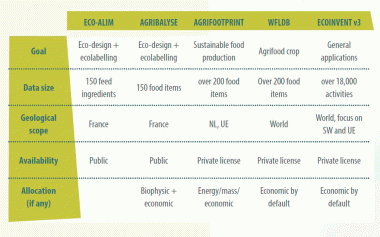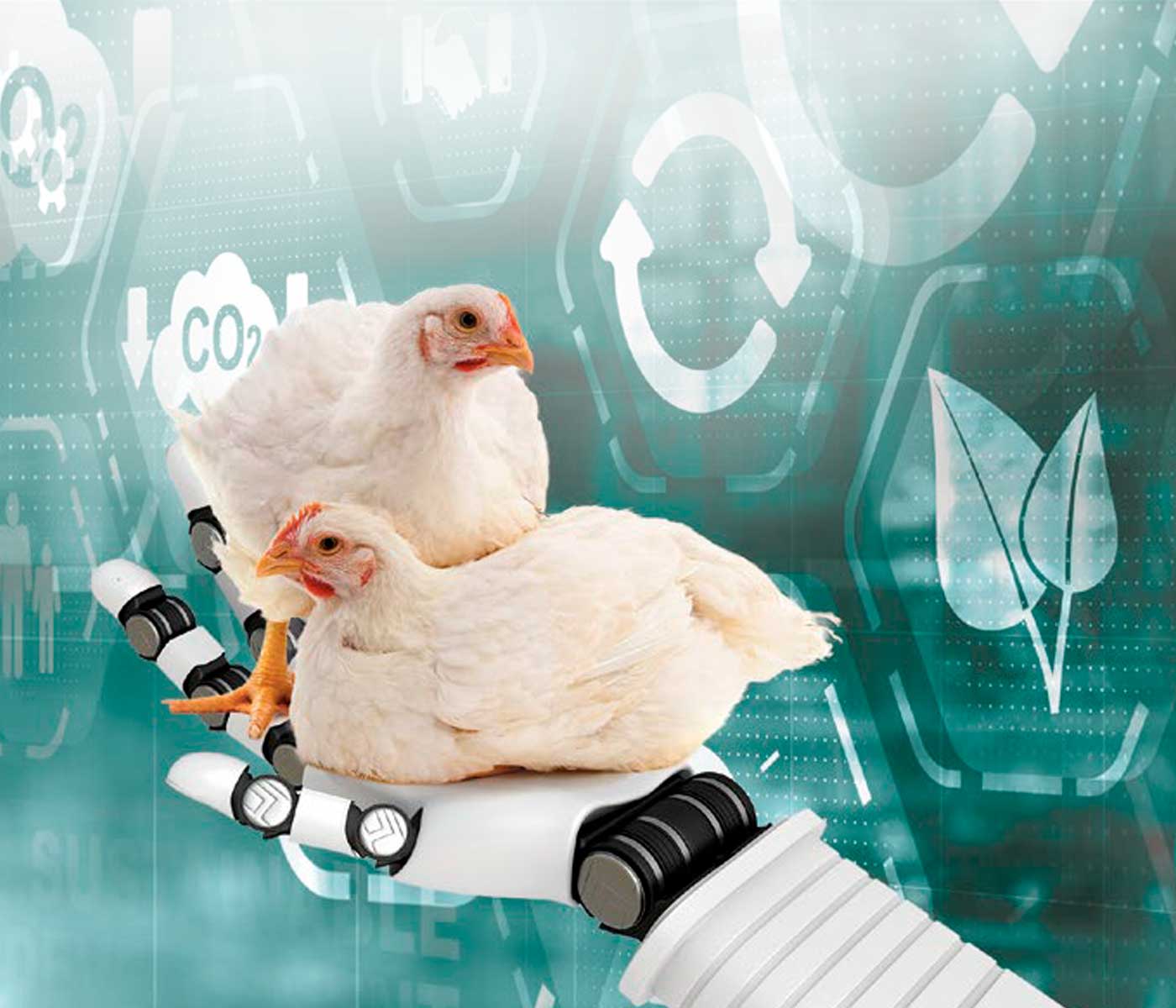Content available at: Indonesia (Indonesian) Melayu (Malay) ไทย (Thai) Tiếng Việt (Vietnamese) Philipino
Sustainability is at the center stage of the media and professional gatherings worldwide. Several companies in the poultry allied industry have launched services to assess the sustainability of their clients’ production systems. They can also estimate how their products and services might improve sustainability.
However, due to the novelty of sustainability analysis, its terminologies and methodologies are not widely known by the poultry industry. There are several techniques to evaluate sustainability, such as life-cycle assessment.
LIFE-CYCLE ASSESSMENT
Often known as LCA or Life Cycle Analysis, is an analytical approach to assess the environmental burdens of products or services over their life cycle.
- LCA compiles all inputs and outputs (materials and energy) from lifecycle phases included in the system boundary to assess sustainability metrics of interest.
- The cradle-to-grave LCA includes analyzing the entire process from resource extraction to manufacturing, consumption, and end-of-life treatment, such as disposal.
- This means from feedstuff and feed additive production to meat or eggs and disposal of mortality, litter, offal, and other byproducts. This methodology is described in the ISO 14040/14044 standard.
LCA Objectives
An LCA can be used for various objectives:
- Acquire environmental information and integrate the ecological knowledge.
- Identify potentials for optimization of the environmental performance.
- Explore strategies to reduce the environmental impacts.
- Provide early-stage environmental impact results of novel products.
- Combine with economic analysis such as life-cycle costing to provide both environmental and economic sustainability.
Life-cycle phases
A holistic LCA approach, also called cradle-to-grave LCA, considers the entire life cycle of a product in five main phases or stages:
- Raw materials extraction.
- Product manufacturing.
- Distribution.
- Consumption.
- End-of-life treatment.
This means the system boundary of such LCA includes upstream, the production system, and downstream processing.
HOW IS THE LCA CONDUCTED?
A standard LCA follows the ISO 14040/14044 in four steps:
- Goal and Scope de finition: Establishing objectives, system parameters, and scopes; What goods are analyzed and contrasted under what circumstances?
- Life Cycle Inventory analysis: Which resources are used? How much energy is consumed, and what emissions occur during the product’s life cycle?
- Impact assessment: How are the outcomes of the Life Cycle Inventory evaluated in terms of their e ffects on the environment?
- Interpretation: How are the fi ndings of the impact assessment interpreted?
IMPACT ASSESSMENT METHODS
In an LCA, relevant emissions from and to soil, air, and water will be considered based on the use of energy and materials. Different life cycle impact assessment (LCIA) methods differ in the various impact indicators characterization, normalization, and weighting factors. The most widely used indicators are:
- Global warming potential (GWP) or Carbon Footprint (CF).
- Acidification potential (AP).
- Eutrophication potential (EP).
- Energy consumption or cumulative energy demand (CED).
Some methods report mid-point indicators focusing on a single environmental problem, such as energy consumption or carbon footprint.
Other methods (such as the Eco-Indicator) combine relevant environmental impacts into a single result as an end-point indicator.
The selection of mid-point or end-point indicators, suitable impact categories, and assessment methods should be based on the Goal and scope defined in the previous steps of the LCA.
Examples of LCIA methods
- CML2001.
- EDIP 1997 & EDIP 2003.
- Eco-Indicator 99.
- Ecological footprint.
- Ecological scarcity method (1997 & 2006 & 2013).
- Impact World+.
- Ecosystem Damage Potential (EDP).
- Environmental Priority Strategy (EPS 2000).
- Cumulative Energy Demand (CED).
- IPCC.
- IMPACT 2002+.
- TRACI.
- ReCiPe 2016.
There are several LCA Software that helps to make these analyses in the poultry and feed LCA studies:
- Umberto.
- Opteinics used by BASF Animal Nutrition.
- Sustell licensed by DSM Animal Nutrition.
- Watson service tool used by Trouw Nutrition.
- SimaPro.
INVENTORY DATABASES
Collecting environment-related data, particularly for upstream and downstream processes, is exceedingly challenging. The compilation for inventory data is time-consuming work when conducting an LCA.
Obtaining your primary data for the production process and adopting existing databases to cover potential data gaps is crucial.
- LCI database often contains Life Cycle Inventory data of a product or component and the material, energy, and emission flows.
- In contrast, the LCA database contains calculated environmental impact results of a product and methods for assessing the impact.
- Since the main cost and primary resource in poultry production is feed, most databases used for LCA analyses are related to feed ingredient sources and the variability of its impact depending on crops and processing,
Some examples of reference feed databases are:
Ecoinvent LCI database, developed in Switzerland, offers a background database for LCA at a global scale. As one of the market leaders in this field, ecoinvent contains more than 13’300 data sets and offers many new and updated data sets.
Currently, ecoinvent v3.9 is the latest database of the provider. Integrated into Umberto LCA+, it contains unaggregated data so that users can dig into the process chain of a product into its subordinate units.
 Table 1. Feed-related Inventory Databases Comparison.
Table 1. Feed-related Inventory Databases Comparison.
Another very comprehensive database is the GFLI database. The Global Feed LCA Institute launched this database on November 12th, 2020, starting a new phase to maintain and expand a qualitative database adhering to international LCA principles.
The GFLI is an independent animal nutrition and food industry institute to develop a publicly available Animal Nutrition LCA database to support valuable environmental assessment of animal nutrition products and stimulate the continuous improvement of the environmental performance in the animal nutrition and food industry.
In the GFLI, the environmental results are assessed through the ReCiPe 2016 and the Environmental Footprint method using SimaPro software. The system boundary depends on the product type or feed ingredient (cultivated and processed), detailed in the process described in the file.
Both formats include three allocation options: economic (preferred method in Feed PEFCR), mass, and energy allocation. The complete life cycle inventory analysis is the final product in its aggregated form.
Global Metrics for Sustainable Feed (GFLI) LCA database is publicly available and used by Nutreco, CJ BIO, Kemin, DSM, ADM, Agrifirm, ANAC, AFIA, Cargill, FEFAC, IFIF, Duynie Group.
CONCLUSION
- As the public becomes more aware of sustainability, all food production systems must understand their LCA parameters to present them to stakeholders.
- We hope this short overview of the methodology to conduct an LCA helps the poultry industry better understand the different aspects involved.
- The LCA analyses can also make us aware of points of inefficiency that can contribute to continuous improvement processes. In future articles, we will present examples of applying these concepts.












